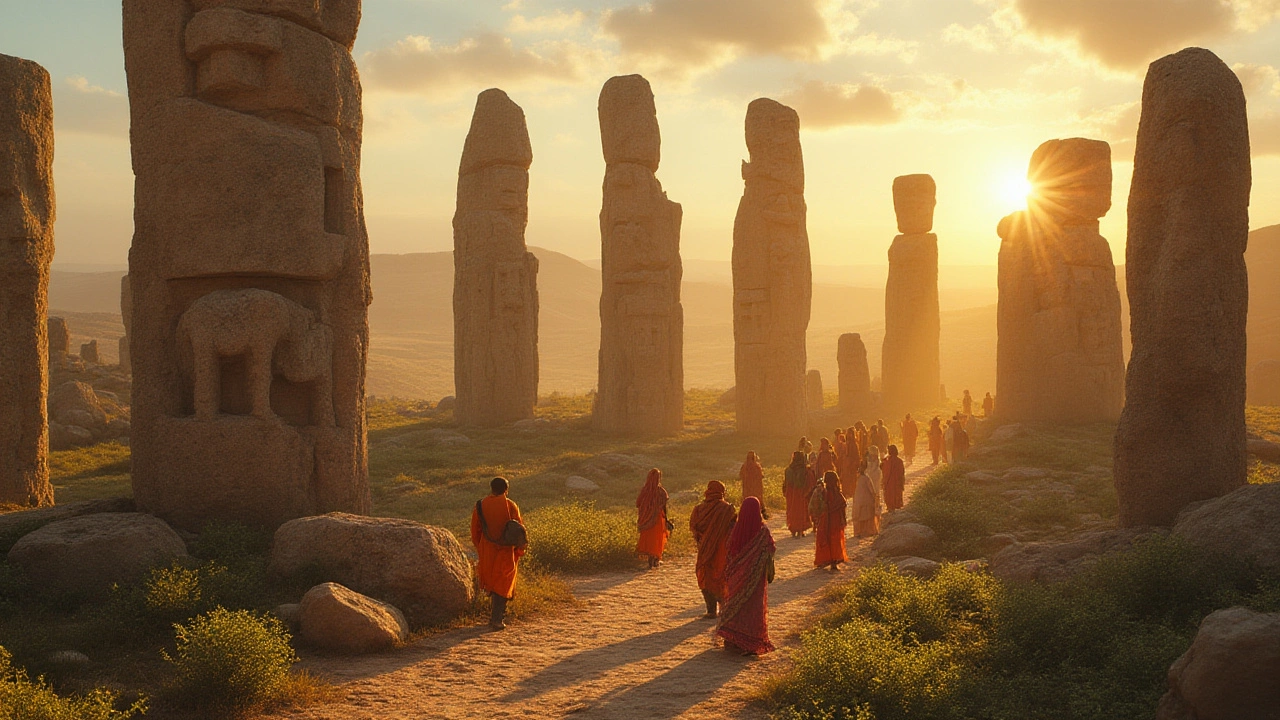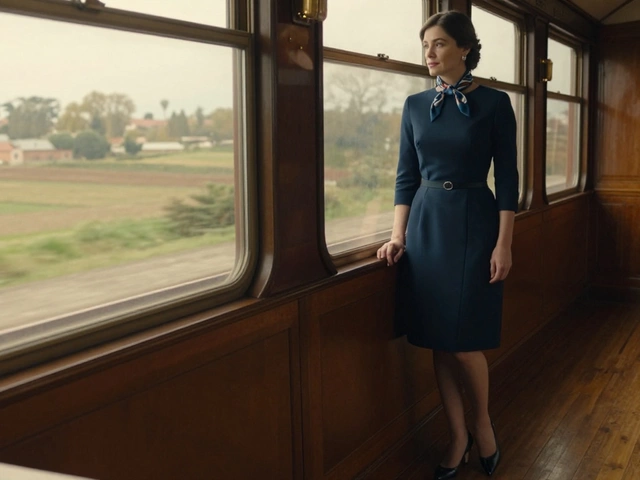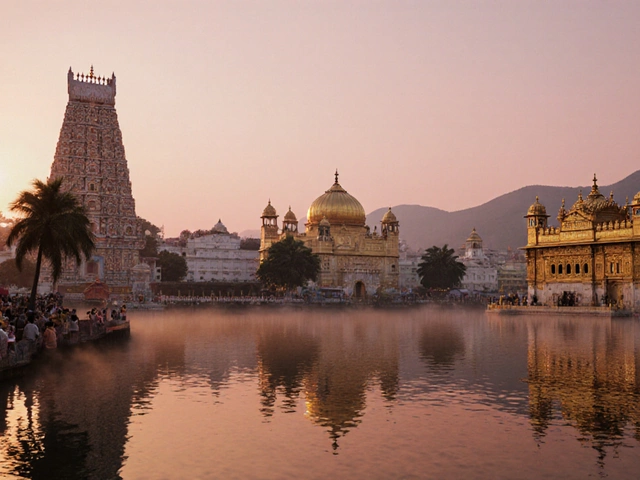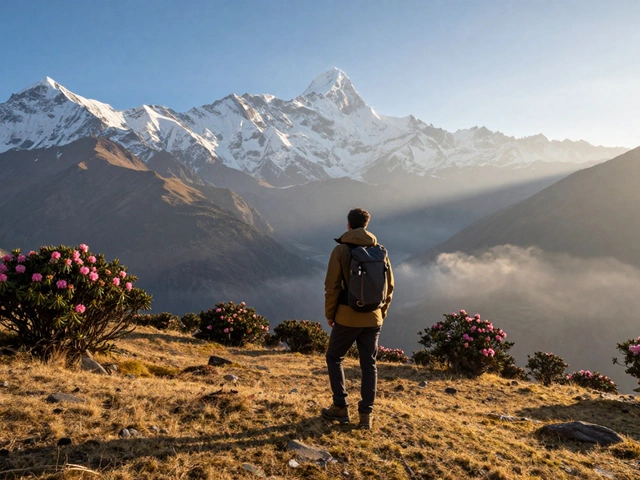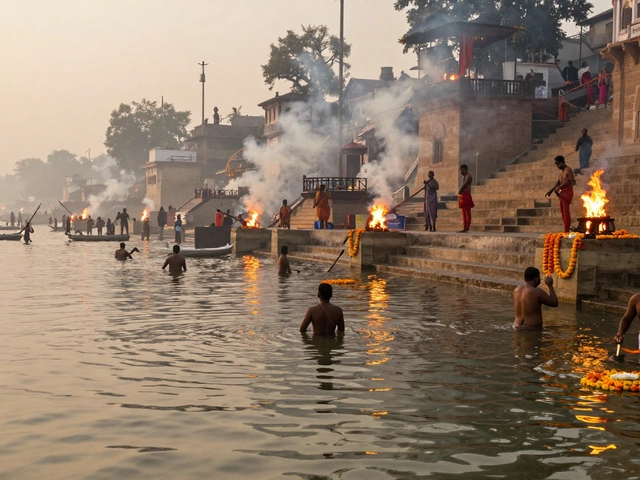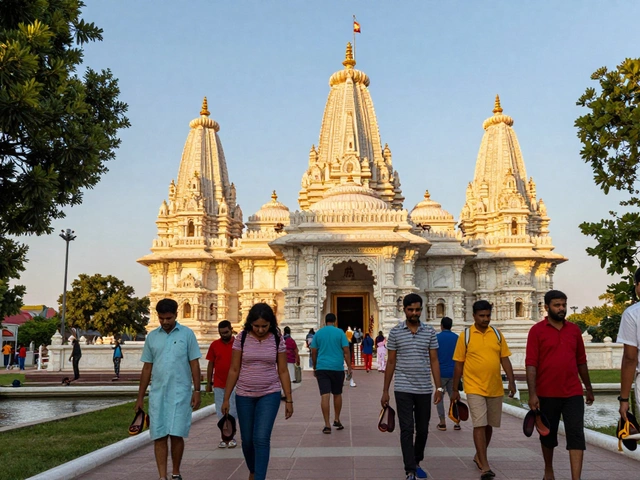Long before the pyramids, before Stonehenge and Babylon—before anyone even dreamed up fast food—people were already stacking stones in a way nobody expected. You’d think the world’s oldest heritage site would be something like the Pyramids of Giza, right? That’s the classic guess. But nope. The oldest UNESCO-recognized heritage site actually sits quietly in southeastern Turkey, partly buried under rolling hills and farmland. It’s called Göbekli Tepe, and if you haven’t heard that name, you’re about to see why every archaeologist inside and out of Indiana Jones circles gets goosebumps just saying it.
The Mystery of Göbekli Tepe: A Place That Should Not Exist
You wouldn’t stumble across Göbekli Tepe on your dream vacation list. There’s no grand entrance, no golden statues, just massive stone pillars in circles, many carved with animals and abstract signs. What’s mind-blowing: these stones were put there over 11,000 years ago. That’s right—people started assembling Göbekli Tepe before writing, pottery, metal tools, and even the wheel. The site dates back to about 9600 BCE. For context, that places it nearly 7,000 years before Stonehenge in England, more than twice as old as the Great Pyramids.
Until the 1990s, scientists mostly believed organized religion and monumental architecture only arrived after humans settled down to farm. But at Göbekli Tepe, all that is turned upside down. The people who built the site were hunter-gatherers—yes, the original foragers who roamed for berries and wild goats—and yet they somehow coordinated to move pillars weighing up to 16 tons. No wheels, no draft animals, just teamwork and, probably, some makeshift sledges and a whole lot of grit. Some of the carvings on the pillars—foxes, deadly scorpions, wild boars, even vultures—might have carried special meaning or told stories. The fact these hunter-gatherers built such a huge structure before even inventing clay pots just blows my mind, honestly.
In case you like numbers (I do, and so does David, my history-buff partner), archaeologists have uncovered more than 200 pillars arranged in about 20 circles at the site. Each pillar is up to 20 feet tall. Some experts think only 5% of Göbekli Tepe has even been excavated. We’re literally just scratching the surface of what might be buried down there.
Here’s a table breaking down the basics for the data nerds like me:
| Fact | Göbekli Tepe |
|---|---|
| Location | Şanlıurfa, Turkey |
| Constructed | Approx. 9600 BCE |
| Estimated Original Builders | Hunter-gatherer groups |
| Number of Identified Pillars | Over 200 |
| UNESCO Heritage Status | Listed in 2018 |
| Size of Main Stone Pillars | Up to 5.5 meters (18 ft) tall, 16 tons each |
What’s also weird? After a few centuries, people deliberately buried Göbekli Tepe and left. Why? No one really knows. Maybe society changed, maybe the local legends vanished, or maybe it was part of some ritual. Every year, new finds at the site surprise everyone and challenge basically everything we thought we knew about early humans.
Why Göbekli Tepe Changes Everything About Human History
So, what makes Göbekli Tepe something archaeologists still obsess over? Simple: it forces us to rethink how civilization started. Textbooks used to say temples, organized religion, and complex societies only formed after agriculture was invented. But at Göbekli Tepe, you’ve got a huge religious site existing centuries before anyone farmed a single wheat field.
Some researchers now argue the urge to gather, worship, and build sacred spaces may actually have driven people to settle down and start farming—not the other way around. Imagine that: religion led to villages and crops, not the reverse like everyone learned in school.
It’s not just the timing that’s wild. The engineering is something else. Without metal tools or beasts of burden, villagers choreographed massive labor projects. How did they organize everyone? Was there a leader-shaman? Did workers get paid in feasts or just the thrill of being part of something “epic”? We’re still piecing this together. The artwork adds another layer of mystery: carved animals and symbols hint at ancient rituals or even the first mythologies.
Can’t forget climate: Back then, the nearby plain was a green savanna, not the arid land you see now. So, part of Göbekli Tepe’s magic is that it gives a glimpse into a lost prehistoric world, teeming with wildlife and perhaps strange festivals under the stars. Even though you can walk around the ruins today, it takes some imagination to picture the crowds or dances that once filled these enclosures.
The discovery fueled documentaries, endless debates (trust me—David is obsessed), and rewrote a good chunk of history class syllabuses. That’s why it’s no overstatement to say Göbekli Tepe changed our idea of what makes humans human: imagination, collaboration, spirituality… even before the plow.
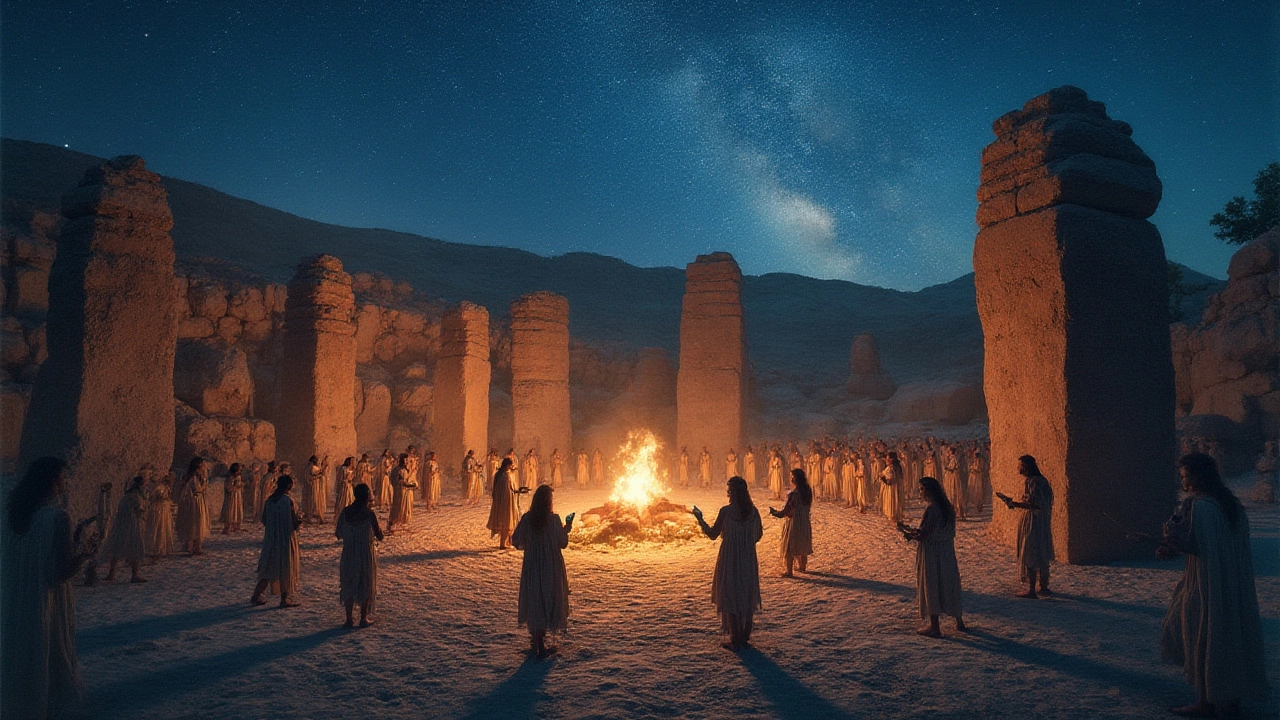
Other Contenders and Misconceptions: Debunking Oldest Site Myths
History buffs love to argue (just ask David after his third espresso). So, some try to claim other sites are older or fit the bill better than Göbekli Tepe. It’s worth clearing up confusion.
Some people point to the Pyramids of Giza (built 2,600 BCE), the city of Jericho (with walls dated to 8,000 BCE), and Stonehenge (2,500 BCE). They all are ancient and incredible, but they don’t beat Göbekli Tepe’s age. Even Australia’s sacred Indigenous sites and India’s Bhimbetka rock shelters are thousands of years younger—breathtaking, but not quite the “oldest heritage site” per UNESCO’s global listing.
Is every ancient site a UNESCO World Heritage Site? Not at all. Many ancient places haven’t been designated as such—sometimes due to politics, sometimes because proper documentation doesn’t exist, and sometimes just because the discovery is too recent. Göbekli Tepe got its UNESCO badge only in 2018, after decades of research and lobbying.
What makes a site get those UNESCO stripes? UNESCO goes for sites that show “outstanding universal value.” Göbekli Tepe isn’t just old; it’s proof of complex, creative human effort at a time everyone thought people could only make simple camps. Plus, it’s provided so much new info about prehistory that its global importance is now undisputed.
There’s another misconception worth squashing: heritage doesn’t always mean buildings. Sometimes, UNESCO lists living traditions, rural landscapes, and sacred natural spots. Yet for “built” sites with stone-on-stone action, Göbekli Tepe still holds the cake for age.
For all the Stonehenge fans out there: yes, that site is magical and mysterious, but it’s more than 6,000 years younger than Göbekli Tepe. If you’ve ever driven to Stonehenge’s busy roundabout and joined the crowds craning for a photo, just imagine doing the same in southeastern Turkey—except with way fewer visitors and much older stones.
Tips for Visiting Göbekli Tepe and Unexpected Lessons
Thinking about seeing the world’s oldest heritage site for yourself? Contrary to what you might expect, Göbekli Tepe is actually pretty visitor-friendly, considering its age. But there are a few things to keep in mind to make the pilgrimage really worth it.
- The on-site museum is a must: Start with the visitor center to get some backstory. They have 3D reconstructions and models to help you imagine what the place looked like when people were doing whatever weird rituals they did.
- Guided tours: These aren’t your average snoozy lectures. Guides at Göbekli Tepe are usually local and passionate (some are practically walking history encyclopedias). They can point out which carvings mean what, and which enclosure is hottest in the latest archeological circles.
- Pack sun protection: It’s exposed and can get hot, especially from late spring through early autumn. Hats, sunscreen, and good shoes are essential—there are no shaded trees sheltering you from Anatolian sun like back in the prehistoric savanna days.
- Photography: Pictures are allowed, but the light is best in the early morning or late afternoon. You’ll beat the crowds too.
- Time your visit: Fall and spring have balmy weather. Summer is scorching. Winters can be pretty if you like a chill and lonely vibe, but check local conditions first.
If you can’t get to Turkey anytime soon, some museums have virtual reality reconstructions (seriously, worth checking out online). Books pile up on the subject, and there’s even a Netflix documentary for history geeks like David who want every detail.
Lesson-wise, Göbekli Tepe is humbling. If prehistoric people with no utilities, no WiFi, and hardly any tools could pull off massive group projects for reasons nobody living can fully explain, what’s stopping the rest of us from getting a little creative? Next time you walk past a stony field, or you and friends want to build something wild, maybe you’ll remember: humanity’s oldest heritage lies not just in stones but in our imagination and ability to unite for a bigger story.
